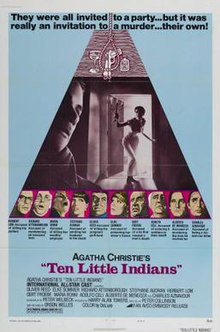
Dame Agatha Mary Clarissa Christie, Lady Mallowan, was an English writer known for her 66 detective novels and 14 short story collections, particularly those revolving around fictional detectives Hercule Poirot and Miss Marple. She also wrote the world's longest-running play, the murder mystery The Mousetrap, which has been performed in the West End of London since 1952. A writer during the "Golden Age of Detective Fiction", Christie has been called the "Queen of Crime"—a moniker which is now trademarked by her estate—or the "Queen of Mystery". She also wrote six novels under the pseudonym Mary Westmacott. In 1971, she was made a Dame (DBE) by Queen Elizabeth II for her contributions to literature. Guinness World Records lists Christie as the best-selling fiction writer of all time, her novels having sold more than two billion copies.

Murder on the Orient Express is a work of detective fiction by English writer Agatha Christie featuring the Belgian detective Hercule Poirot. It was first published in the United Kingdom by the Collins Crime Club on 1 January 1934. In the United States, it was published on 28 February 1934, under the title of Murder in the Calais Coach, by Dodd, Mead and Company. The UK edition retailed at seven shillings and sixpence (7/6) and the US edition at $2.

Peril at End House is a work of detective fiction by British writer Agatha Christie, first published in the US by the Dodd, Mead and Company in February 1932 and in the UK by the Collins Crime Club in March of the same year. The US edition retailed at $2.00 and the UK edition at seven shillings and sixpence (7/6).
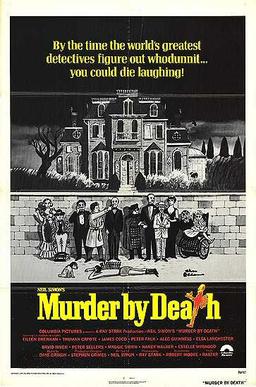
Murder by Death is a 1976 American comedy mystery film directed by Robert Moore and written by Neil Simon. The film stars Eileen Brennan, Truman Capote, James Coco, Peter Falk, Alec Guinness, Elsa Lanchester, David Niven, Peter Sellers, Maggie Smith, Nancy Walker, and Estelle Winwood.

Evil Under the Sun is a work of detective fiction by British writer Agatha Christie, first published in the UK by the Collins Crime Club in June 1941 and in the US by Dodd, Mead and Company in October of the same year. The UK edition retailed at seven shillings and sixpence (7/6) and the US edition at $2.00.
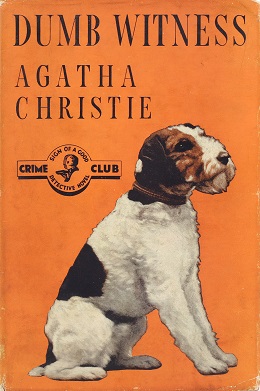
Dumb Witness is a detective fiction novel by British writer Agatha Christie, first published in the UK by the Collins Crime Club on 5 July 1937 and in the US by Dodd, Mead and Company later in the same year under the title of Poirot Loses a Client. The UK edition retailed at seven shillings and sixpence (7/6) and the US edition at $2.00.

Ten Little Indians is a 1965 British crime mystery film directed by George Pollock. It is the second film version of Agatha Christie's 1939 novel. It was produced by Oliver A. Unger, with co-producer Harry Alan Towers also credited as co-writer under his pen name Peter Welbeck.

Murder at the Gallop (1963) is the second of four Miss Marple films made by Metro-Goldwyn-Mayer. It was based on the 1953 novel After the Funeral by Agatha Christie, with Margaret Rutherford as Miss Jane Marple, Charles "Bud" Tingwell as Inspector Craddock and Stringer Davis as Jane Marple's friend Mr Stringer returning from the previous film.

Appointment with Death is a 1988 American mystery film and sequel produced and directed by Michael Winner. Made by Golan-Globus Productions, the film is an adaptation of the 1938 Agatha Christie novel Appointment with Death featuring the detective Hercule Poirot. The screenplay was co-written by Winner, Peter Buckman, and Anthony Shaffer.

Agatha Christie: And Then There Were None is a 2005 point-and-click adventure game developed by AWE Productions and published by The Adventure Company for Microsoft Windows. It was the first in The Adventure Company's Agatha Christie series. The game is a detective murder-mystery; it begins with nine people, including Patrick Narracott, the playable character, who meet and journey to the fictional Shipwreck (Soldier) Island. There, two additional onscreen characters are introduced, and the story then follows the events that unfold.

Murder on the Orient Express is a 2001 made-for-television mystery film directed by Carl Schenkel based on the 1934 novel Murder on the Orient Express by Agatha Christie, featuring Hercule Poirot. This version is set in the present day and has a smaller cast than the novel. The screenplay was written by Stephen Harrigan and the original music score was composed by Christopher Franke.

Desyat Negrityat is a 1987 Soviet mystery thriller film adaptation of Agatha Christie's 1939 novel of the same name, now known as And Then There Were None. It was directed by Stanislav Govorukhin, who also penned the script.
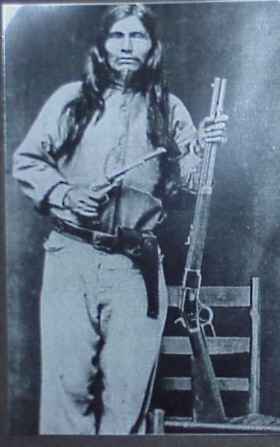
Ned Christie, also known as NeDe WaDe (ᏁᏕᏩᏕ), was a Cherokee statesman. Christie was a member of the executive council in the Cherokee Nation senate, and served as one of three advisers to Principal Chief Dennis Bushyhead. A member of the Keetoowah Society, Christie supported Cherokee sovereignty and tried to resist white encroachment.

Agatha Christie: Murder on the Orient Express is a 2006 adventure game developed by AWE Productions and published by The Adventure Company for Microsoft Windows. It is the second installment in The Adventure Company's Agatha Christie series. The setting is five years before the events in Agatha Christie: And Then There Were None, with a largely unrelated storyline. The plot follows an amateur sleuth, Antoinette Marceau, and her investigation of a murder with twelve possible suspects aboard the Orient Express, which has been blocked by an avalanche in the Kingdom of Yugoslavia during 1934. She is aided by famous detective Hercule Poirot.

And Then There Were None is a 1943 play by crime writer Agatha Christie. The play, like the 1939 book on which it is based, was originally titled and performed in the UK as Ten Little Niggers. It was also performed under the name Ten Little Indians.
Ten Little Indians is a 1989 mystery film directed by Alan Birkinshaw. The fourth English-language screen adaptation of Agatha Christie's 1939 novel And Then There Were None, it was the third version to be produced by Harry Alan Towers, following his 1965 and 1974 adaptations.
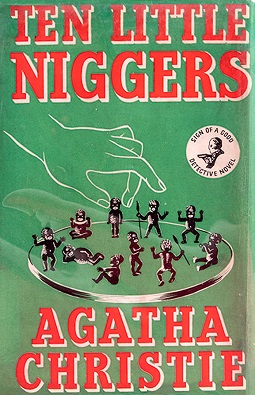
And Then There Were None is a mystery novel by the English writer Agatha Christie, who described it as the most difficult of her books to write. It was first published in the United Kingdom by the Collins Crime Club on 6 November 1939, as Ten Little Niggers, after an 1869 minstrel song that serves as a major plot element. The US edition was released in January 1940 with the title And Then There Were None, taken from the last five words of the song. Successive American reprints and adaptations use that title, though American Pocket Books paperbacks used the title Ten Little Indians between 1964 and 1986. UK editions continued to use the original title until 1985.
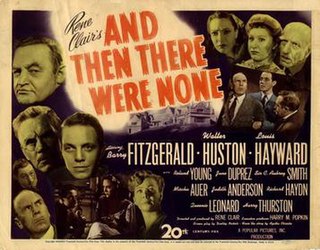
And Then There Were None is a 1945 film adaptation of Agatha Christie's 1939 mystery novel of the same name, directed by René Clair. It was released in the United Kingdom as Ten Little Indians, in keeping with the third United Kingdom title of Christie's novel. The film was produced by 20th Century Fox and due to the lapsed copyright, it is now in the public domain. The film has been remastered multiple times and is freely available online.

And Then There Were None is a 2015 mystery thriller television series that was first broadcast on BBC One from 26 to 28 December 2015. The three-part programme was adapted by Sarah Phelps and directed by Craig Viveiros and is based on Agatha Christie's 1939 novel of the same name. The series features an ensemble cast, including Douglas Booth, Charles Dance, Maeve Dermody, Burn Gorman, Anna Maxwell Martin, Sam Neill, Miranda Richardson, Toby Stephens, Noah Taylor, and Aidan Turner. The programme follows a group of strangers who are invited to an isolated island where they are murdered one by one for their past crimes.
Lists of adaptations of the works of Agatha Christie:
